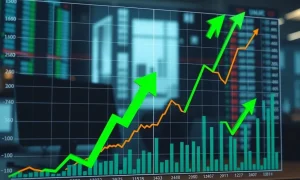Major financial institutions are observing a significant shift in investment behavior as JPMorgan‘s latest research reveals investors are adopting an exceptionally cautious investor approach toward economic positioning. This defensive stance reflects growing concerns about market volatility and economic uncertainty.
Understanding the Cautious Investor Approach
JPMorgan’s comprehensive analysis demonstrates that investors are implementing a remarkably cautious investor approach across multiple asset classes. Consequently, portfolio managers are reducing exposure to volatile sectors while increasing allocations to defensive positions. This strategic shift indicates widespread concern about potential economic headwinds.
Key Indicators of Defensive Positioning
Several critical factors highlight this cautious investor approach:
- Reduced equity exposure in growth-sensitive sectors
- Increased cash allocations for liquidity protection
- Higher demand for quality bonds and stable assets
- Enhanced hedging strategies against market downturns
Market Implications of Conservative Strategies
The widespread adoption of a cautious investor approach is significantly impacting market dynamics. Furthermore, trading volumes in riskier assets have declined noticeably. Meanwhile, demand for safe-haven investments has increased substantially. This collective behavior suggests investors anticipate continued market uncertainty.
JPMorgan’s Research Methodology
JPMorgan analysts employed multiple data sources to identify this cautious investor approach. They examined:
- Portfolio allocation changes across institutional investors
- Trading pattern shifts in equity and bond markets
- Risk appetite indicators from derivative markets
- Client sentiment surveys from wealth management divisions
Sector-Specific Impact Analysis
The cautious investor approach is affecting sectors differently. Technology and consumer discretionary stocks are experiencing notable outflows. Conversely, utilities and consumer staples are seeing increased interest. This sector rotation demonstrates investors’ preference for stability over growth potential.
Global Investment Trends
This cautious investor approach isn’t limited to domestic markets. International investors are similarly reducing risk exposure. Emerging market investments have particularly suffered from this defensive positioning. Developed markets with stable economies are benefiting from capital flows.
Future Outlook and Projections
JPMorgan analysts predict this cautious investor approach will persist through upcoming quarters. Economic indicators suggest continued uncertainty. Therefore, investors will likely maintain defensive positions. However, some opportunities may emerge for contrarian strategies.
Risk Management Considerations
Financial advisors recommend several strategies within this cautious investor approach:
- Maintain adequate liquidity reserves
- Diversify across uncorrelated assets
- Implement disciplined rebalancing protocols
- Monitor economic indicators regularly
FAQs: Cautious Investor Approach
What defines a cautious investor approach?
A cautious investor approach emphasizes capital preservation over aggressive growth. It typically involves reduced exposure to volatile assets, increased cash positions, and enhanced risk management strategies.
How long might this cautious trend continue?
Most analysts expect cautious positioning to continue until economic uncertainty decreases significantly. This could span several quarters depending on macroeconomic developments.
Are there opportunities during cautious market periods?
Yes, cautious periods often create opportunities in undervalued quality assets. Investors with long-term horizons can find attractive entry points during market pessimism.
How does JPMorgan track investor sentiment?
JPMorgan uses multiple metrics including fund flows, positioning data, derivative markets, and proprietary client surveys to gauge investor sentiment and positioning trends.
Should retail investors adopt similar caution?
Retail investors should consider their individual risk tolerance and investment horizon. While professional caution indicates market concerns, personal financial goals should drive individual strategy decisions.
What sectors benefit from cautious investing?
Defensive sectors like utilities, consumer staples, healthcare, and quality bonds typically benefit during periods of increased investor caution and risk aversion.








